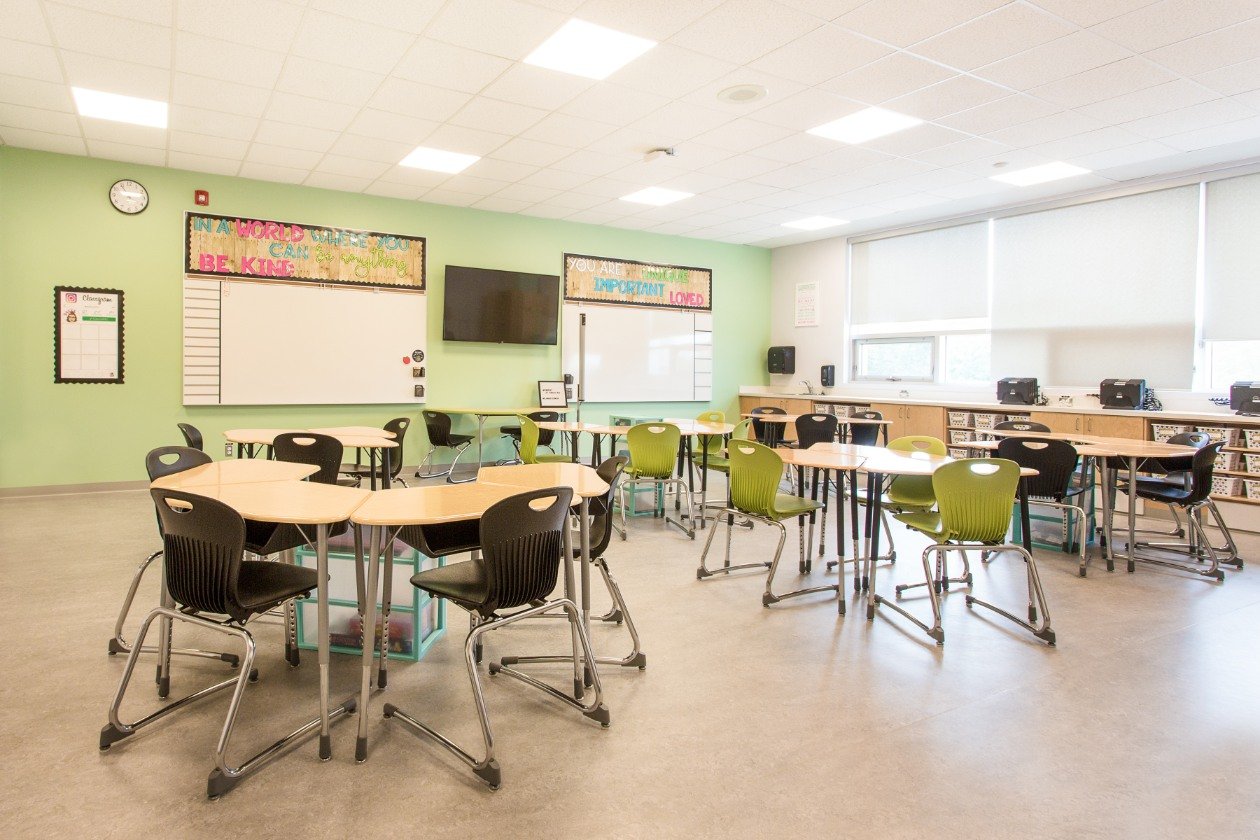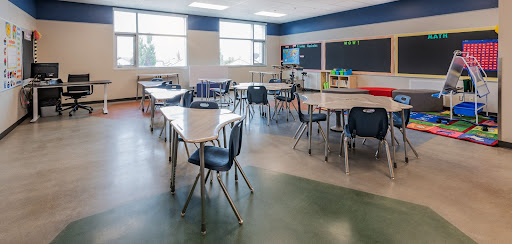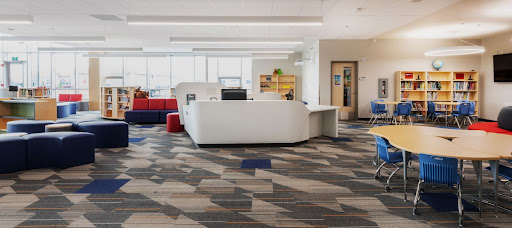Empowering Learners Through Student-Centered Design
March 21, 2023

As technologies have advanced, so too have the innovative ways in which students learn.
Gone are the days of reading from a textbook and listening to a teacher lecture at the front of the class. Although this type of learning can still offer benefits, it no longer aligns with the educational needs of students.
In fact, the classroom of today requires a flexible and collaborative space that promotes learner autonomy using technologies, multimedia areas to facilitate hybrid spaces and room for interaction and connection.
As the classrooms of yesterday are no longer equipped to meet the needs of learners, contemporary design must incorporate elements that accommodate and promote how students learn best.
“Years ago, it was one size fits all. You’d walk into a classroom and it’d be rows of desks and chairs. Now our main goal is that when you step into a classroom there’s an area within that space that meets the needs of every learner.”
Rethinking Classroom Design
In recent years, more research has been devoted to understanding how a student’s academic success can be impacted by the layout of their physical space. In fact, according to a study by market research firm Shapiro & Associates, over 92 percent of teachers believe that classroom design has a strong impact on student learning. Given these findings, it is no wonder then that schools are rethinking their spaces, to better facilitate positive learning outcomes and provide a model for success.
Even organizations such as Google, Apple and Pixar appreciate the importance of intentional design, aligning their spaces with their core values in order to promote collaboration, inclusion and community. Taking a page from modern workplace design, schools are re-thinking the physical space, incorporating elements that are inspirational, intentional and student-centered.
The Student-Centered Classroom
The student-centered classroom is a collaborative space where students are active participants in their education. The nucleus of this design approach is how students learn, understanding that their physical environment greatly impacts their success in the classroom. In this setting, students are creating and innovating, not simply memorizing, listening and subsequently forgetting. These spaces are built with activity, inclusion and flexibility in mind. The result? A flexible space that adapts based on how each child uniquely and independently learns.
Student-centered classrooms create opportunities to optimize individual choice and autonomy by:
- Encouraging Movement: A student-centered classroom allows for healthy movement, providing safe and accessible motion opportunities that help everyone feel organized, alert, fit, and ready to learn. Children who have access to healthy movement in the classroom are more likely to stay engaged and have better attention and behaviors.
- Embracing Flexible and Balanced Spaces: The modern classroom environment requires a flexible and agile physical setup that will accommodate both independent and group work; a place where students can learn in ways that make them feel comfortable and learn in their style.
- Freeing Teachers from Their Desks: In the modern school environment, attention is given to the students as learners – they are the focus. If teachers can free themselves from their desks, suddenly opportunities for different forms of teaching and learning are increased with a more collaborative and happy approach for all.
- Incorporating Natural Lighting: Lighting is an important part of student-centered classroom design. Bright fluorescent lighting is being replaced with more natural and incandescent light through the use of windows and lamps. Not only does this make students more comfortable and reduce headaches, but studies have shown that student learning rates have improved between 7 and 26 percent in classrooms that are exposed to adequate natural lighting.
The Benefits of Student-Centered Classrooms
Just some of the many benefits of student-centered classrooms are that they promote passionate learning with effective participation, giving students the opportunity to make decisions about their education. A student-centered classroom encourages students to take an active role in their learning, facilitating collaboration between teacher and learner and forging independent yet joint study.
In the teacher-centered classrooms of the past, supporting these principles would have been challenging, if not impossible. By fostering inspiration and creativity, students can more effectively capture and develop their ideas in a collaborative and inclusive forum, inspiring inquiry and a commitment to lifelong learning.
Lastly, the student-centered classroom strengthens trust and communication. Research has shown that students who learn in student-centered environments are more confident, better able to articulate their thoughts and communicate with others.
École Champs Vallée School: A Case Study
One school that has applied these principles is École Champs Vallée School in Beaumont, Alberta. They have experienced first-hand the benefits of designing student-centered learning environments.

École Champs Vallée is a newly constructed French immersion school where students and staff work together as a whole, welcoming people from a variety of backgrounds and cultures. One of the school’s core values is the belief that all students are capable of learning, and it is the responsibility of the faculty to find the most effective way to teach each student.
This is evident as you take in the modern and inclusively designed spaces, forging the path for this current take on learning.
Schools like the École Champs Vallée that take a student-centered approach do so in part by designing their facilities around this design principle with open, flexible spaces and hands-on learning experiences. Given the significant benefits of utilizing these contemporary design principles, schools are incorporating them at increasing rates.
Providing students with the tools and environments to succeed will benefit a generation of learners, encouraging a lifelong commitment to education and facilitating important skills that meet the needs of the ecosystems of today.
These benefits, in addition to a world-class education, are essential to ensuring children have the best opportunities and the support they need to be successful.


